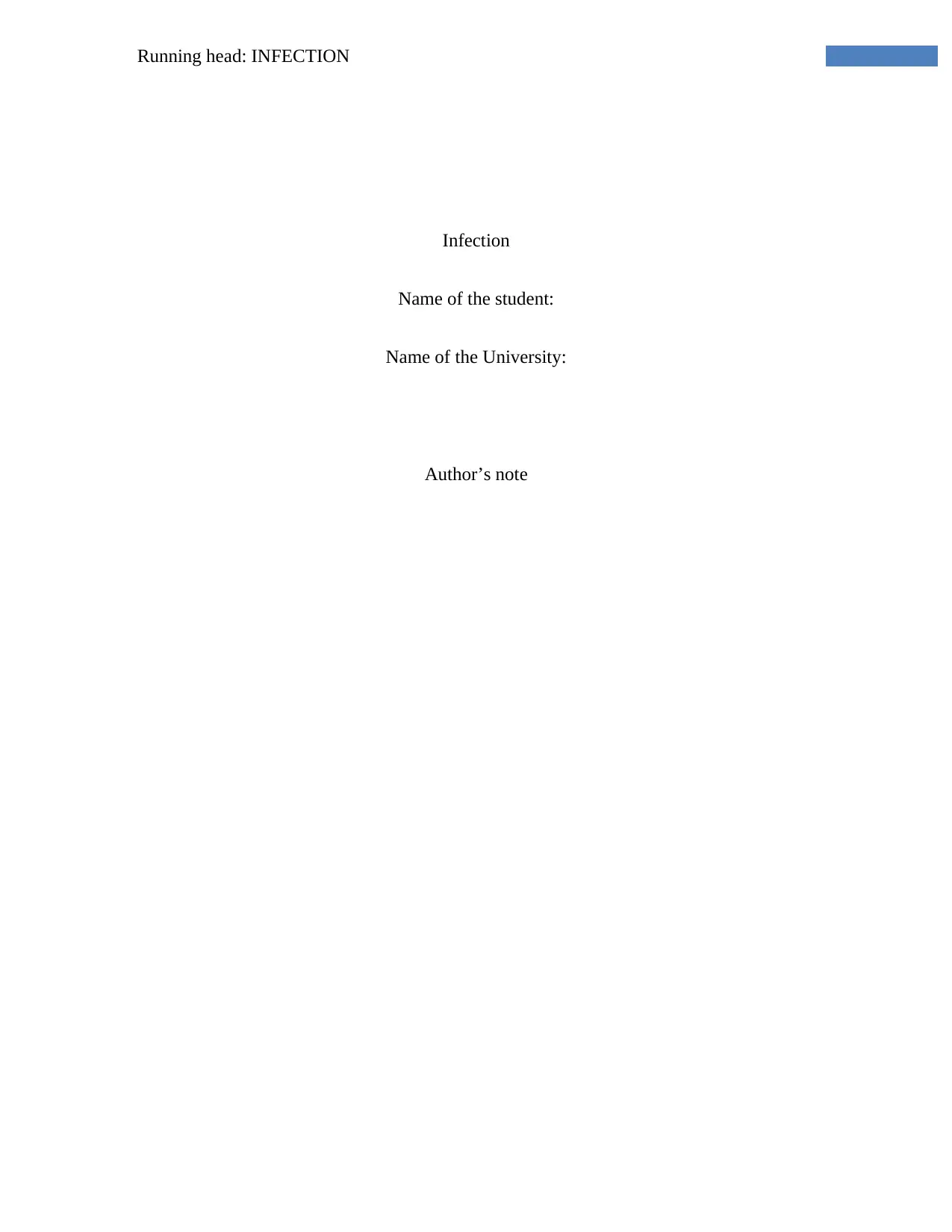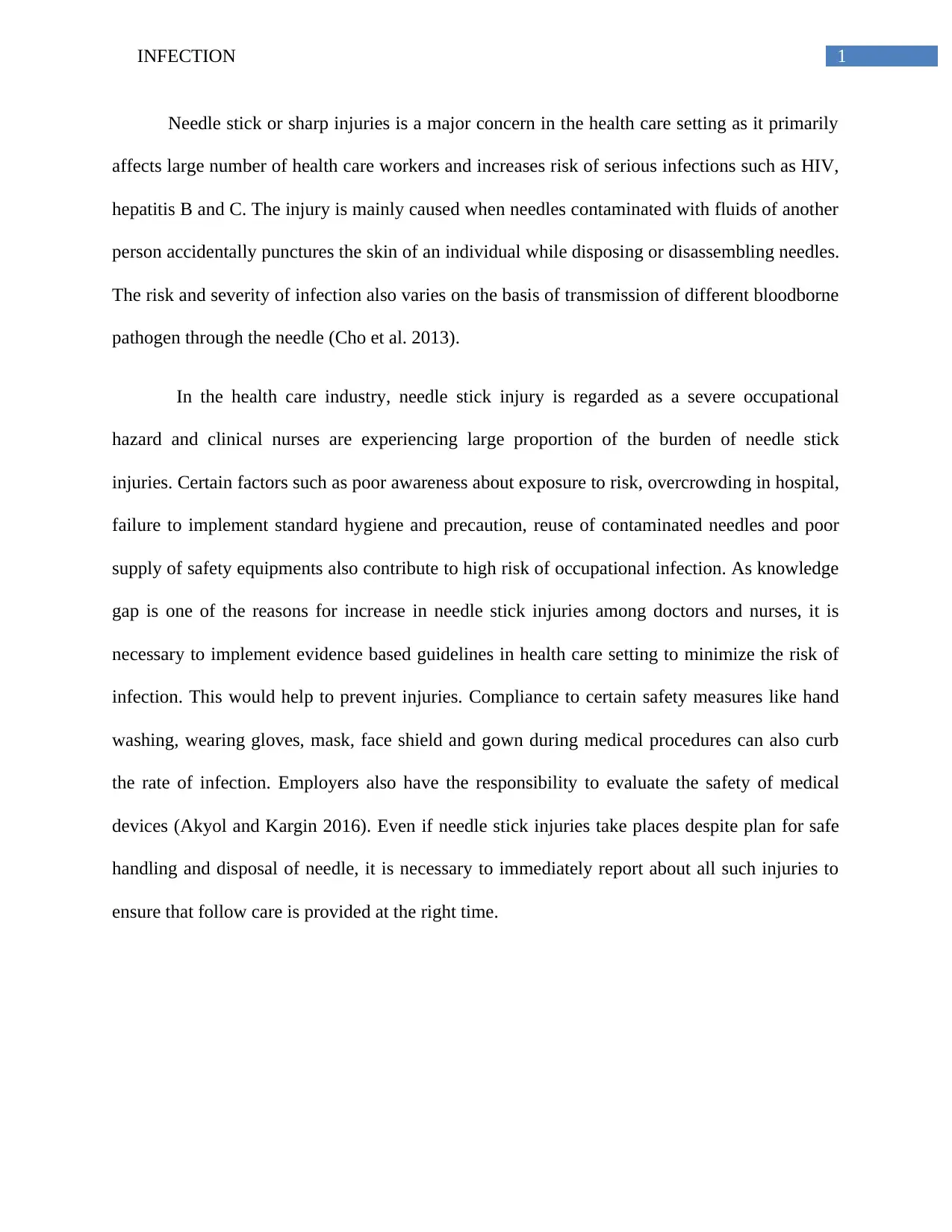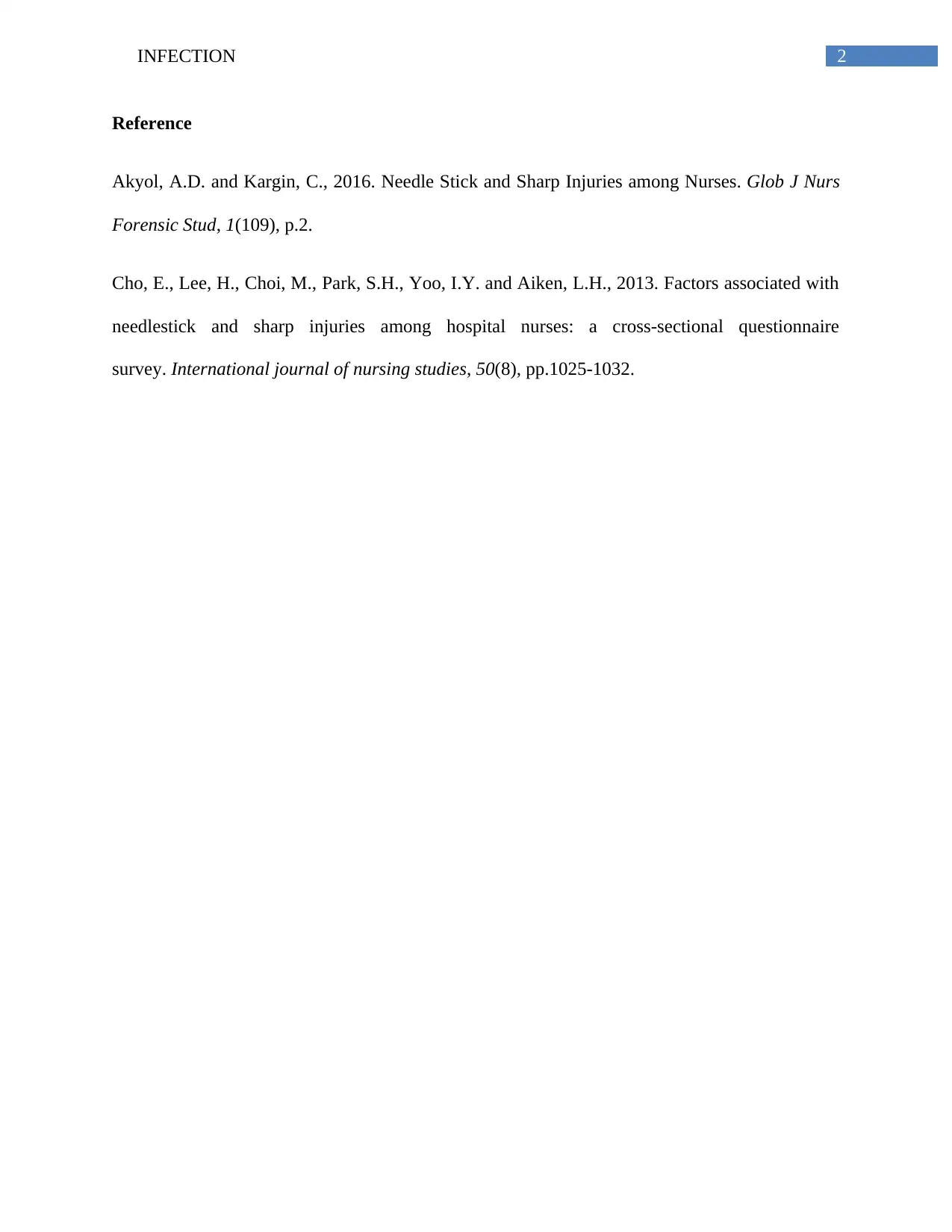Needle Stick Injuries: A Study on Infection Control in Healthcare
VerifiedAdded on 2020/04/13
|3
|406
|54
Report
AI Summary
This report focuses on the significant issue of needle stick injuries within the healthcare sector, highlighting the associated risks and preventative measures. The study emphasizes the potential for transmission of bloodborne pathogens, the impact on healthcare workers, and the importance of implementing safety protocols. The report underscores the necessity of adhering to standard hygiene practices, using appropriate protective equipment, and promptly reporting injuries. The report also acknowledges the role of employers in ensuring the safety of medical devices, and the need for evidence-based guidelines to reduce the incidence of these injuries. The conclusion stresses the importance of continuous education and adherence to safety protocols to minimize the risk of infection and protect healthcare professionals.
1 out of 3










![[object Object]](/_next/static/media/star-bottom.7253800d.svg)